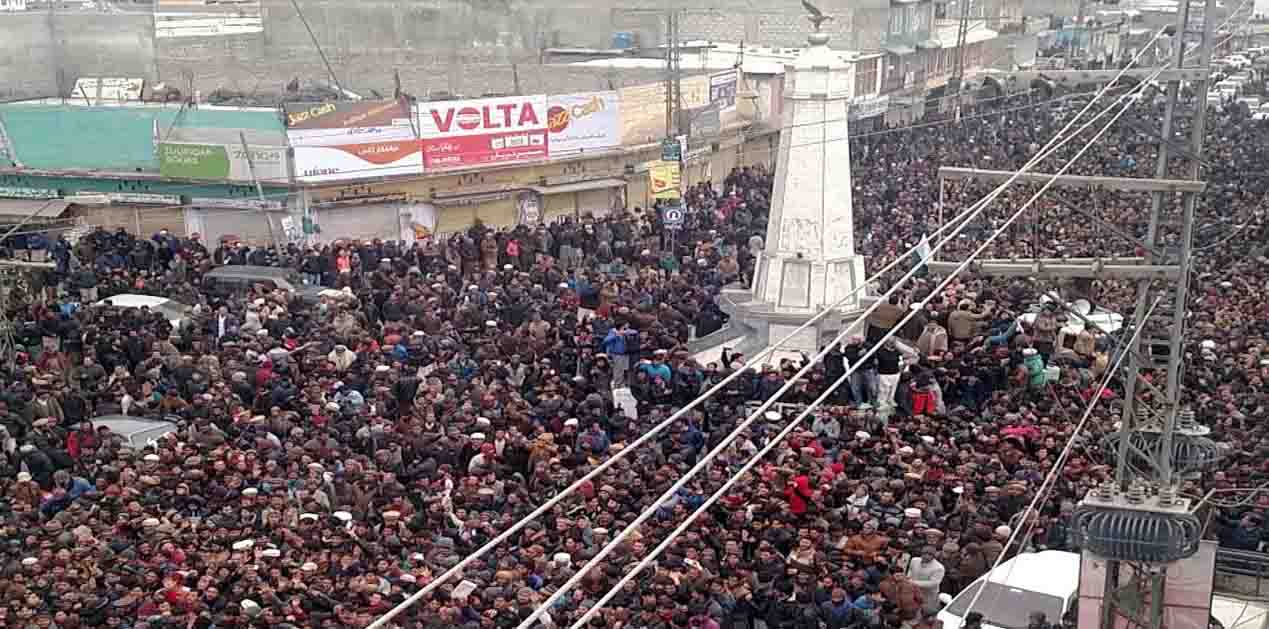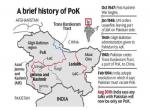A wave of strong protests swept across Gilgit-Baltistan recently, after the Gilgit-Baltistan Council, Islamabad, announced the imposition of direct taxes under the Income Tax (Adaption) Act, 2012. The protests were jointly led by Anjuman-e-Tajiran (which loosely translates into Traders’ committee, the word Tajir meaning Traders) and the Awami Action Committee (AAC). A few days ago, protestors even announced a “long march” from Skardu to Gilgit town (roughly 150 kilometer distance) to demonstrate their discomfort with tax imposition, defying the harsh winters the Karakoram region is known for.
Indian media was quick to react to these developments and news channels reported these protests as a pro-freedom movement directed against the state, citing the disputed status of the region. Although Islamabad withdrew the notification under pressure, the emerging developments leave a lot to be discussed on the prevalent mood in Gilgit-Baltistan. Therefore, it becomes important to grasp the underlying dynamic at play especially that of the protagonist AAC, along with the key actors driving it, if one is to understand the prevailing mood in Gilgit-Baltistan and the region’s relationship with Islamabad and the ‘establishment’.
The AAC, a collection of 20-22 religious and nationalist parties was formed roughly four years ago, and became widely popular in 2014, when it led protests after Islamabad withdrew wheat subsidies. Led by a charismatic advocate Ahsan Ali, the then convener, AAC’s outreach to the common people and its mobilization strategies made it highly popular among the masses. In one of its early protests, AAC even coined the slogan “Kargil Chalo” citing the subsidies entitled to Kargilis, the larger issue being the view of the neighboring Ladakh enjoying greater benefits and political representation vis-à-vis Gilgit-Baltistan.
Unfortunately, in 2014 itself, Ahsan Ali was forced to resign from the convener position, following which he founded the Action Tehreek, which lent support to the AAC. On the other hand, the AAC also got a new Chairman, Maulana Sultan Raees, who happens to be a Sunni cleric with close ties to the Ahle Sunnat Wal Jamaat (ASWJ), a Deobandi outfit which emerged from the notorious Sipah-e-Sahaba. The Maulana’s closeness with Qazi Nasir Ahmed, the head of Gilgit-Baltistan’s ASWJ wing, is not unknown, yet his oratory skills and the ability to convince the masses won him people’s goodwill.
The Pakistani establishment, by infiltrating Gilgit-Baltistan’s populist movements with pro-Pakistan leaders like Raees has managed to alter mass sentiments in favour of joining Pakistan. A deeper insight into these protests would help explain how the AAC under Raees’s leadership has become instrumental in gaining monopoly in managing the sentiment of masses, but also towing a line the establishment wants it to.
The AAC acknowledges the disputed nature of Gilgit-Baltistan and has time and again taken up issues which directly affect the people. “Gilgit-Baltistan was a disputed territory and imposition of taxes on its citizens was unlawful and unconstitutional. When the government wants to collect taxes from Gilgit-Baltistan people, they are declared citizens of the country, and when they demand equal rights it is said that the region is a disputed territory”, Maulana Raees said in one of his statements. Yet, it believes merger with Pakistan as the panacea to the problems faced by Gilgit-Baltistan.
Nature of Recent Protests: Interpreting “Tax do Huquq Lo”
Immediately after the order was made public, the AAC (along with the Anjuman-e-Tajiran) announced a shutter-down strike across Gilgit-Baltistan when protest marches witnessed an immense show of unity by the people who shunned their sectarian differences to rally for a common cause.
Slogans like “Tax do Huquq lo” and “No taxation without representation” became the rallying calls of the protestors. Here, the term ‘Huquq’ has two broad interpretations. The first one is the majoritarian view that Gilgit-Baltistan should be given representation (seats in the Senate, along with the right to vote in the national elections) and constitutional recognition as the fifth province. The other view, which is of the nationalists (who are in minority), also demands the same rights as described above, but tentatively. In the longer run, the nationalists aspire for independence from Pakistan through UN mandated referendum since they believe that people of Gilgit-Baltistan would opt for independence from Pakistan, provided a fair referendum takes place. According to the nationalists, GB’s Pro-Pakistan sentiment is a result of draconian measures like Section 4 of the Anti-Terrorism Act, 1997.
The Indian Angle
Given the widespread coverage by the Indian media, and the issue occurring in a disputed territory, the India factor loomed large as the protests grew. However, paradoxes also emerged.
Firstly, it was only because of the Indian media that the Pakistani media swung into action, as it had been ignoring the protests for the first couple days until reports began to trickle from the Indian side. Yet, the same AAC which got Islamabad’s attention due to the role of the Indian media, organised an anti-India rally in Gilgit city to protest against what they termed as India’s unnecessary attention.
On the one hand, the protestors were branded as Indian agents by Gilgit-Baltistan’s Chief Minister, but on the other hand, these were the same protestors who were mobilised by the AAC headed by a pro-establishment cleric. An alternative theory which could explain this is that the protests could have been organised at the behest of the agencies to test the unity of Gilgit-Baltistan’s residents for the cause of fifth province.
Even though the Pakistani establishment is mindful of the UN resolution mandating Pakistan to commence with Pakistan Occupied Kashmir’s (PoK) de-militarisation as the first step towards the resolution of Kashmir dispute, the message which Islamabad tries to convey to Gilgit-Baltistan’s residents is that their aspiration for provincehood and enjoying full rights is being throttled by India.
The next plausible step, currently being cogitated by Islamabad, is regarding some kind of constitutional arrangement where Gilgit-Baltistan could enjoy a marginal improvement over the 2009 constitutional order on devolution of powers and national representation. The possibility was discussed in the Pakistani Parliament last week, but not much progress was made. On the other hand, New Delhi has remained firm on its stand over PoK, and went as far as boycotting the Chinese Belt and Road Initiative (in protest against China’s routing of the Pakistan Economic Corridor through Gilgit-Baltistan), yet a coherent policy on how it plans to handle the Gilgit-Baltistan issue is yet to evolve.
(The Author is a Research Associate with Vivekananda International Foundation, New Delhi)
(Views expressed are of the author and do not necessarily reflect the views of the VIF)
Image Source: http://thehighasia.com/anti-tax-movement-thousands-of-protesters-start-long-march-from-skardu-to-gilgit/











Post new comment